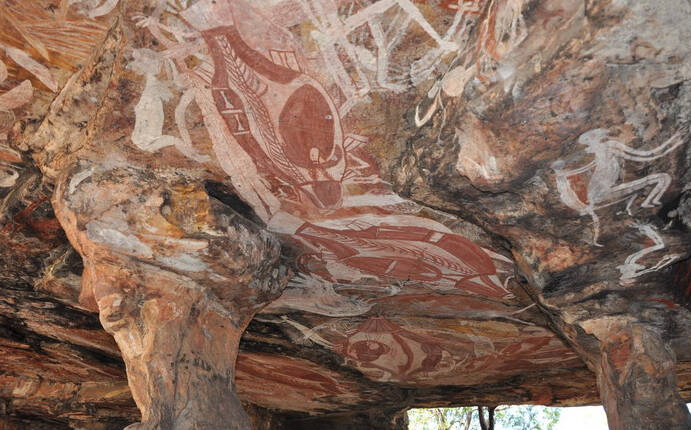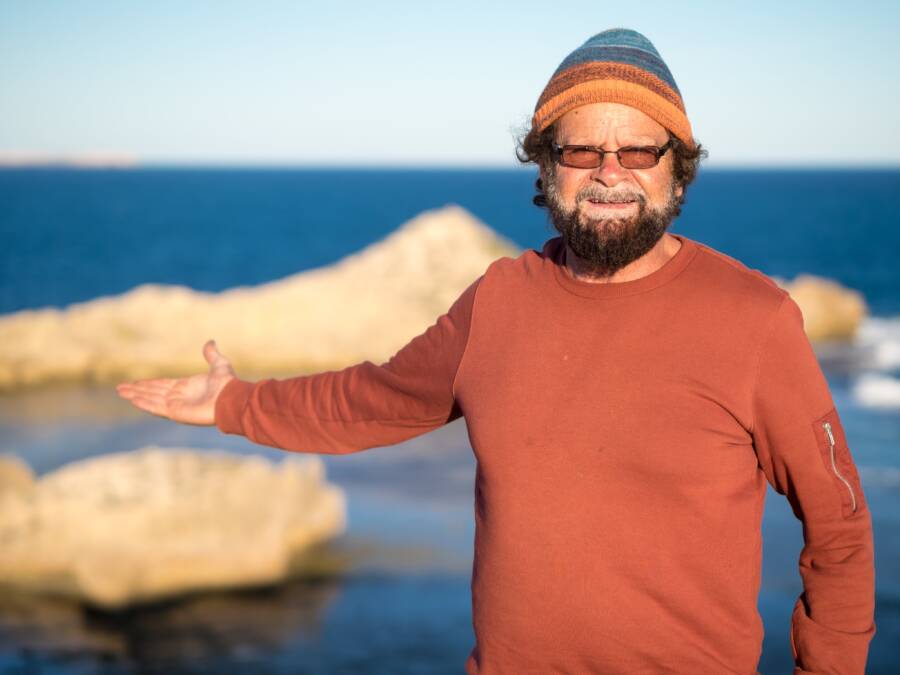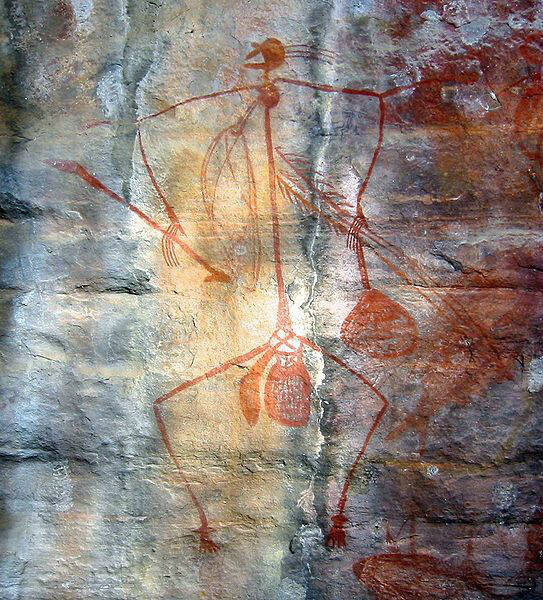Koonalda Cave is a sacred, protected site for Australia's Mirning people, with cave art drawn by Ice Age humans indicating some of the earliest signs of Aboriginal life in the region.

TwitterA section of the limestone paintings in Koonalda Cave.
The nearly treeless desert region of the Nullarbor Plain in southern Australia contains some of the country’s most significant ancient artworks: a series of Ice Age finger paintings on the limestone walls of Koonalda Cave dating back nearly 30,000 years. But in what has been called a “massive, tragic loss,” the cave’s traditional owners recently discovered that the ancient artwork has been vandalized irreparably.
Speaking with The Guardian, archaeologist Keryn Walshe, who specializes in ancient Aboriginal sites, explained, “The surface of the cave is very soft. It is not possible to remove the graffiti without destroying the art underneath.”
According to Walshe, the artwork was “very significant” to the Mirning people and “unique in Australia,” having been registered as a national heritage site in 2014 because of this. In order to access the cave, the vandals had to dig under a steel gate that was put in place back in the 1980s to prevent these sorts of incidents from happening. Unfortunately, Walshe said the fence became “inadequate” over time, much to the frustration of experts and the Mirning people.
In a statement to CNN, a spokesperson for the South Australia state government described the vandalism as “shocking and heartbreaking,” adding that “Koonalda Cave is of significant importance to the Mirning People, and its tens of thousands of years of history show some of the earliest evidence of Aboriginal occupation in that part of the country.”

TwitterThe graffiti left by the vandals reads, “Don’t look now, but this is a death cave.”
“If these vandals can be apprehended, they should face the full force of the law,” they added.
The South Australia state government has reportedly been working with traditional owners “over recent months” to develop “a comprehensive plan” to protect the site, including installing security cameras.
“The existing fencing and general difficulty in accessing the caves deters the vast majority of visitors from trespassing,” the spokesperson said. “Live monitoring of the site via closed circuit cameras is being considered to better protect the cave.”
But a Mirning elder, Bunna Lawrie, contradicted that statement, saying he had been unaware of the vandalism until it was reported by local media outlets, despite the vandalism being brought to attention in July 2022 by Clare Buswell, chair of the Australian Speleological Federation’s Conservation Commission.

Mirning Elder Bunna Lawrie.
“The failure to build an effective gate, or to make use of modern security services, such as wildlife monitoring cameras that operate 24/7, has, in many ways, allowed this vandalism to occur,” Buswell wrote at the time.
The Mirning people had likewise raised concern in the past over the underwhelming security of the sacred site, which is only accessible to a small group of male Mirning elders. The spiritual site is closed to the public, to preserve the integrity of its metaphysical significance and its artwork.
“We have opposed opening our sacred place, as this would breach the protocols that have protected Koonalda for so long,” a statement from the group said. “Since 2018 we have been asking for support to secure the entrance as a priority and to offer appropriate Mirning signage. This support did not happen.”
Buswell echoed the Mirning people’s frustrations, calling on the state government to increase security at the site before further damage occurs.

TwitterAn ancient Aboriginal painting in Koonalda Cave, which faces the risk of being permanently ruined should more incidents of vandalism occur.
“It’s simply not good enough for the minister to say, ‘Oh, we’ll just increase the amount of fines or other punitive actions,'” she said. “That’s not what this is about. This is about beefing up security.”
Beyond the spiritual significance the site holds for the Mirning people, the Nullarbor Plain art provided historical and scientific value for Australian researchers who, prior to the discovery, believed the country’s indigenous population only dated back to around 8,000 years ago.
Greg Hunt, who served as environment minister when Koonalda Cave was designated as a national heritage site, said, “The discovery caused a sensation and forever changed the then-accepted notions about where, when, and how Aboriginal people lived on the Australian continent.”
The Mirning people went on to say Koonalda “is more than just a precious work of art, this runs deep in our blood and identity.”
“All of our elders are devastated, shocked and hurt by the recent desecration of this site,” Lawrie said. “We are in mourning for our sacred place. Koonalda is like our ancestor. Our ancestor left his spirit in the wall, of the story, of the songline.”
All across the world, ancient sites are under threat of erasure and disrespect — like the nearly 2,000-year-old temple that was destroyed by ISIS, or the sacred Native American cave that was purchased by an anonymous buyer.





